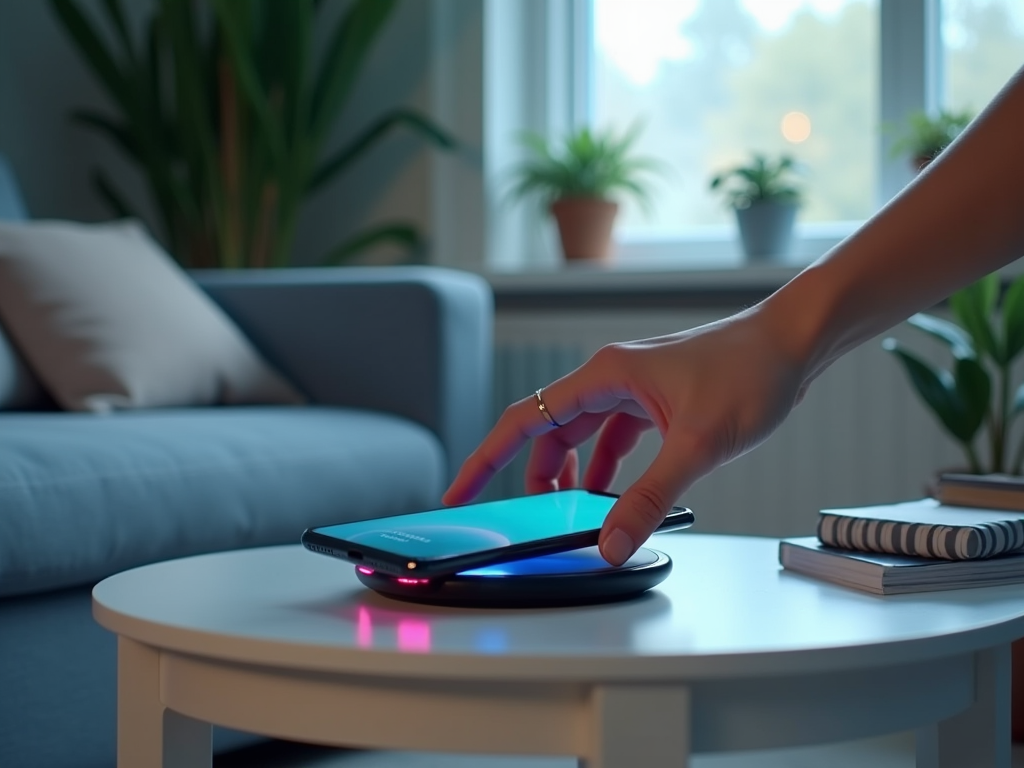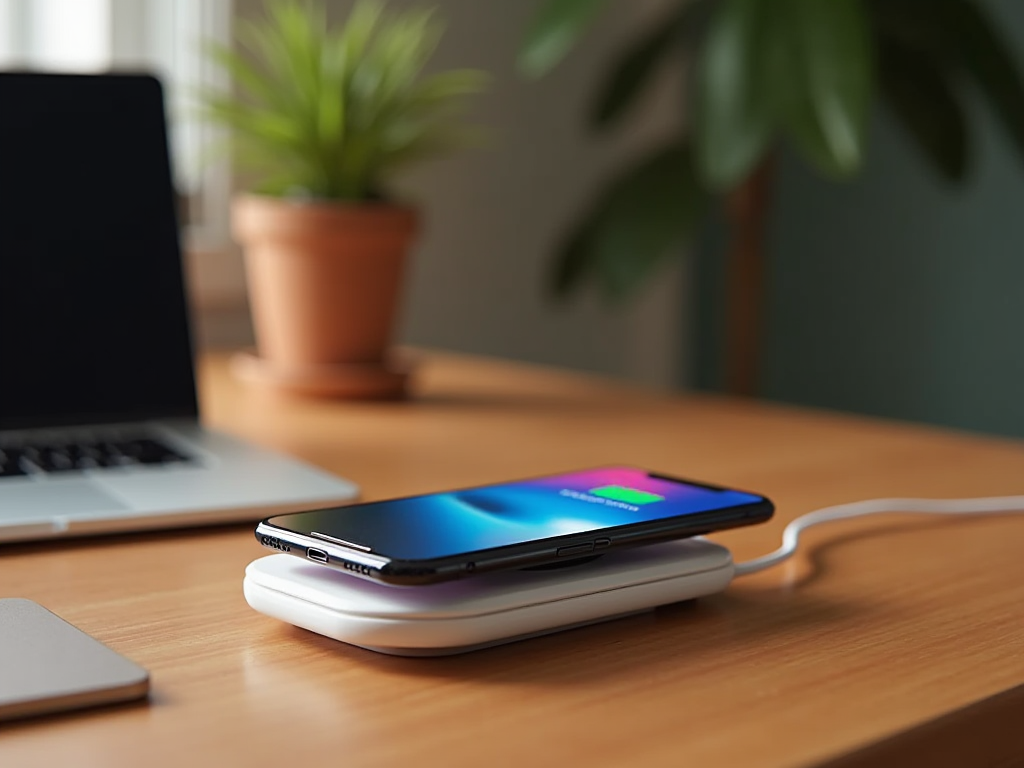As technology has rapidly evolved, we’ve seen significant shifts in how we power our devices. Among these advancements, wireless charging has gained immense popularity for its convenience and efficiency. While this innovation seems to take over traditional charging methods, a cloud of myths still looms over it. Many users harbor misconceptions that could affect their perceptions and usage of wireless charging. However, understanding the truth can not only alleviate these concerns but also enhance the overall user experience. In this article, we aim to debunk the most common myths surrounding wireless charging while emphasizing its safety and practicality.
Understanding Wireless Charging Technology

Wireless charging, also known as inductive charging, is a modern method that uses electromagnetic fields to transfer energy from a charger to a device. This tech-savvy approach negates the frustration of tangled cords and broken connectors. It utilizes a transmitter and a receiver that work in tandem to deliver power wirelessly. By placing your phone on a compatible charging pad, you can initiate the charging process without the need for physical connections. This innovative solution is now standard in many electronics, making it a desirable feature for consumers. Yet, many myths continue to perpetuate around this technology, leading to misinformation.
Myth 1: Wireless Charging is Inefficient and Slower

Many people are under the impression that wireless charging is significantly slower than traditional wired charging. This belief stems from early wireless charging technologies that did indeed lag behind their wired counterparts. However, the landscape has changed dramatically in recent years. Modern wireless chargers can now support fast charging, with speeds that can rival traditional methods. In fact, many consumers are surprised by how quickly their devices power up using this technology. Thus, it’s important to stay updated on the advancements in wireless charging to avoid making baseless comparisons.
| Charging Method | Speed |
|---|---|
| Wired Charging | Up to 20W+ |
| Wireless Fast Charging | Up to 15W |
Myth 2: Wireless Charging Damages Your Battery
Another concern voiced by users is that wireless charging could damage their device’s battery. It’s crucial to understand the component dynamics to properly address this concern. Excessive heat is indeed detrimental to battery health, but reputable wireless chargers are designed to minimize heat production during the charging process. By utilizing advanced technology, they optimize energy transfer and reduce overheating possibilities. Users should always opt for certified wireless chargers, ensuring they are equipped with the necessary features to protect against battery damage. In essence, when used correctly, wireless charging can be safe for your battery.
Battery chemistry plays a vital role in how batteries respond to different charging methods. Here are some key elements to consider:
- Battery Type: Different chemistries, like Lithium-ion, have varied tolerances to charging speeds.
- Heat Generation: Heat is the enemy of battery longevity; use chargers that keep heat levels low.
- Charging Cycles: Wireless charging might lead to more cycles, but quality chargers can mitigate risks.
Myth 3: Any Wireless Charger Works with All Devices
There’s a widespread belief that any wireless charger can work for any device, which is a misconception that can lead to user frustration. In reality, wireless chargers come with various compatibility standards, the most common of which are Qi and PMA. Not all devices support every charging standard, so it’s wise to check specific device requirements before purchasing a charger. Failure to do so may lead to slow charging speeds or the device not charging at all. Additionally, ensuring compatibility is crucial for both safety and efficiency.
Here are some tips for ensuring compatibility:
- Check your device specifications to confirm its wireless charging standard.
- Look for chargers that explicitly state compatibility with your device brand and model.
- Consider purchasing from reputable brands known for their compliance with charging standards.
Myth 4: Wireless Charging Can Cause Overheating
The idea that wireless charging leads to overheating is another misconception many have. While it’s true that older wireless chargers could induce heat, modern advancements have greatly improved safety features. Most new chargers are equipped with mechanisms to regulate temperature during operation. They monitor the charging process, automatically adjusting power levels as needed to prevent overheating. Therefore, when using high-quality wireless chargers, this myth can be put to rest as users can confidently utilize the technology without fear of overheating.
When investing in a wireless charger, consider the following safety features:
- Temperature Regulation: Chargers that automatically adjust power based on heat levels.
- Foreign Object Detection: Prevents charging if metal or other non-compatible objects are detected.
- Overcharge Protection: Stops charging once the battery reaches full capacity, preventing damage.
Myth 5: You Can’t Use Your Phone While Charging Wirelessly
Some users believe that using their phones while charging wirelessly poses a safety risk. While it’s true that using your device can generate some heat, modern chargers are built to handle simultaneous use. However, users should remain vigilant about their phone’s position on the charging pad and monitor for excessive heat. Overall, using your device while charging can add convenience, whether messaging or streaming a video. Thus, if careful consideration is given, this myth does not hold up against practical usage evidence.
The combination of using your device while charging offers several advantages:
- Efficient multitasking, allowing users to stay productive while charging.
- Seamless integration into daily life without the need for cord handling.
- Reduced wear and tear on charging ports, preserving device integrity over time.
Conclusion
The understanding of wireless charging technology and the myths surrounding it are crucial for any modern smartphone user. Debunking these falsehoods can alleviate unnecessary anxiety and encourage users to embrace this innovative charging method. Relying on certified products enhances safety and efficiency, maximizing the advantages of this technology. With advancements improving charging speeds and safety, there’s no reason to shy away from wireless chargers. Rather than being misled by myths, it’s time to empower users with the correct information for a better charging experience.
Frequently Asked Questions
- Is wireless charging really safe for my smartphone? Yes, when using certified chargers, wireless charging is generally safe for smartphones.
- Can I use my phone while it’s charging wirelessly? Yes, you can use your phone during wireless charging, but monitor for heat.
- Does wireless charging shorten battery life? Not inherently; excessive heat can impact battery life, so ensure you use quality chargers.
- What is the main difference between wired and wireless charging? Wired charging directly transfers energy through a cable, while wireless charging uses induction.
- Are all wireless chargers compatible with my device? No, check for compatibility with your phone’s charging standard, like Qi.



